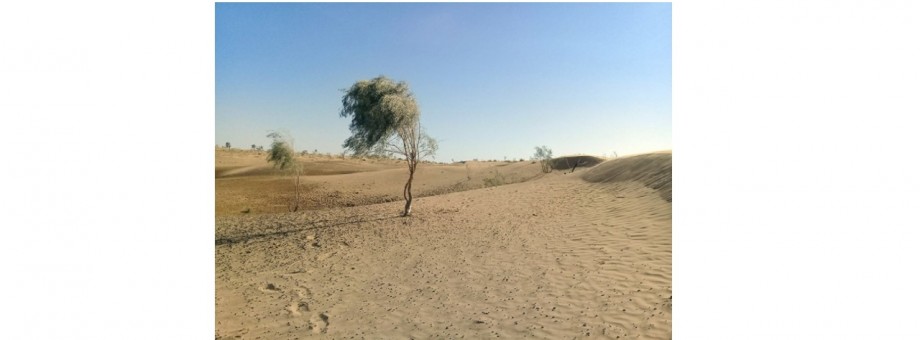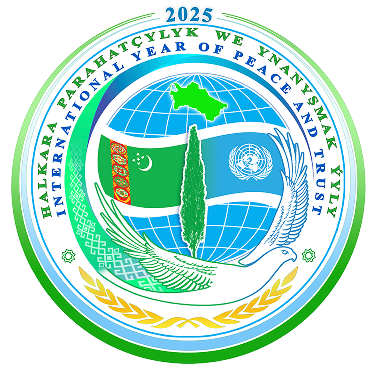A NOMINATION DOSSIER IS BEING PREPARED - «TURANIAN DESERTS OF THE TEMPERATE ZONE»

An online Meeting was held at the Ministry of Agriculture and Environmental Protection of Turkmenistan (MOKH and OOST) dedicated to the implementation of the regional project of the Ministry of Agriculture and Environmental Protection and the Michael Zukkov Foundation for Conservation of Nature (MSF, Germany) «Central Asian Desert Initiative» (CADI).
It was attended by representatives of the Ministry of Agriculture and Environmental Protection, the Land Resources Service, Bereketli of the Garagum and Kopetdag state natural reserves, the National Secretariat for UNESCO in Turkmenistan. The meeting was held jointly with experts from the Michael Zukkov Foundation for Nature Conservation, the Institute of Botany and Landscape Ecology at the University of Greifswald (Germany) and the International Union for Conservation of Nature (IUCN).
The regional Project "Central Asia Desert Initiative" is being implemented simultaneously in Kazakhstan, Turkmenistan and Uzbekistan. Its purpose is to promote the conservation of biological diversity and the development of ecosystem functions of the deserts of Turkmenistan and other countries. One of the main components of the project is the preparation of a Nomination dossier on desert ecosystems for consideration and inclusion in the UNESCO World Heritage List. Such work with serial natural objects is being carried out in Turkmenistan for the first time.
As required by the World Heritage Convention, States Parties to the Convention must submit provisional lists of Critical Territories to the Secretariat at least one year prior to the submission of any nomination. Experts of the CADI / CADI project prepared a list of "Turanian deserts of the temperate zone", which was transferred to the UNESCO World Heritage Center and published on its website in January this year.
While on only 14 desert sites are included in the UNESCO World Heritage List, which are located in tropical and subtropical regions. It should be noted that the ecosystems of the Asian deserts are part of the priority ecoregions of WWF Global 200 - global “hot spots” - the most valuable from the point of view of the conservation of biodiversity of ecoregions on a global scale.
The status of the deserts of the temperate zone of Central Asia is classified by WWF as "critical". In this regard, the existence of vast and well-protected areas to protect fundamental ecological and biological processes in each of the desert landscapes, as transnational constituent parts of one Turanian desert of the temperate zone, is a prerequisite for this unique part of the world.
The serial object "Turanian deserts of the temperate zone" unites three separate reserves: Repetek State Biosphere, Bereketli Garagum and Gaplangyr, as well as reserves that are in their administration. All of them are located in the Eastern, Central and Northern Karakum Desert. All three territories generally cover typical areas of the deserts of Turkmenistan: this includes stony-clayey, sandy, saline deserts, characterized by peculiar natural features, the "kingdom" of depressions, low-mountain ranges, sands and salt marshes of Unguz is represented here. The peculiarity of the relief of the territory of the reserves is due to the presence here of flat, stony and sloping sections of kyr, steep cliffs, depressions, dry channels, aeolian and other forms. This different geomorphological history results in a rich biodiversity.
The Turanian deserts of the temperate zone are outstanding not only in their complexity, but also in the size of the occupied area. The sandy deserts formed by saxaul forests alone cover an area of 500,000 km².
The temperate Central Asian deserts are by far the largest in area compared to similar deserts in North and South America. The huge size of their territory, according to scientists, contributes to favorable conditions for high diversity in everything related to the structure and functioning of ecosystems. They have unique ecological characteristics, provide the existence of numerous endemic species of animals and plants.
Only in these territories you can see real forests of white and black saxaul, whose powerful roots serve as good sand-strengtheners for mobile dunes; in the long hot summer and early autumn saxauls are a place where desert animals can hide from the heat; in addition, these plants bind and store carbons, provide nutritious food for herbivorous animals, and help predict weather conditions in advance.
Within the framework of the project, a Memorandum of Understanding was prepared between Kazakhstan, Turkmenistan and Uzbekistan aimed at the management and protection of objects of the serial transnational nomination "Turanian Deserts of the Temperate Zone", which is currently presented to the relevant authorities for consideration and signing. The nomination dossier "Turanian deserts of the temperate zone" is planned to be completed and submitted for nomination to the UNESCO World Heritage Committee in December 2021 simultaneously by all countries of the region.


 NEWS
NEWS